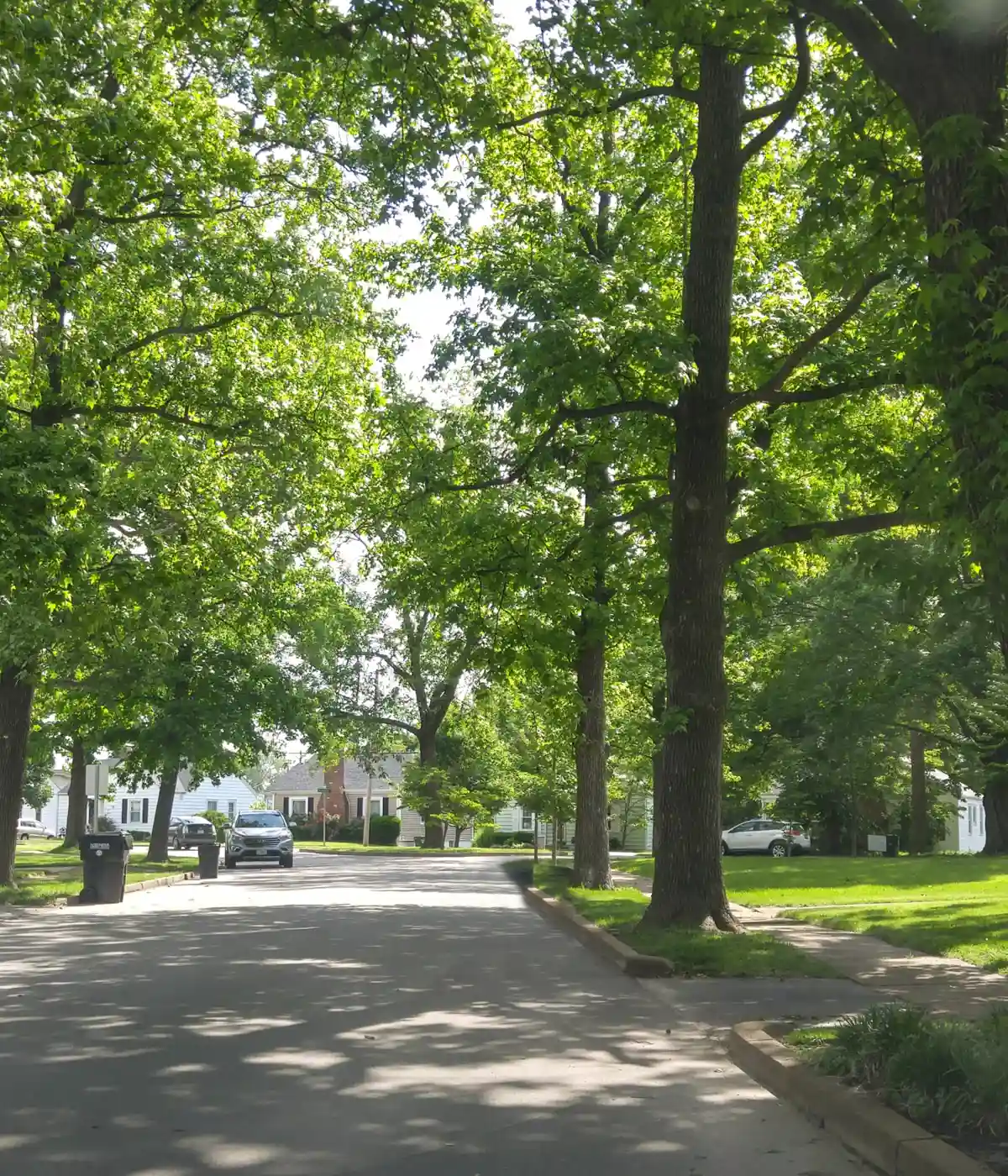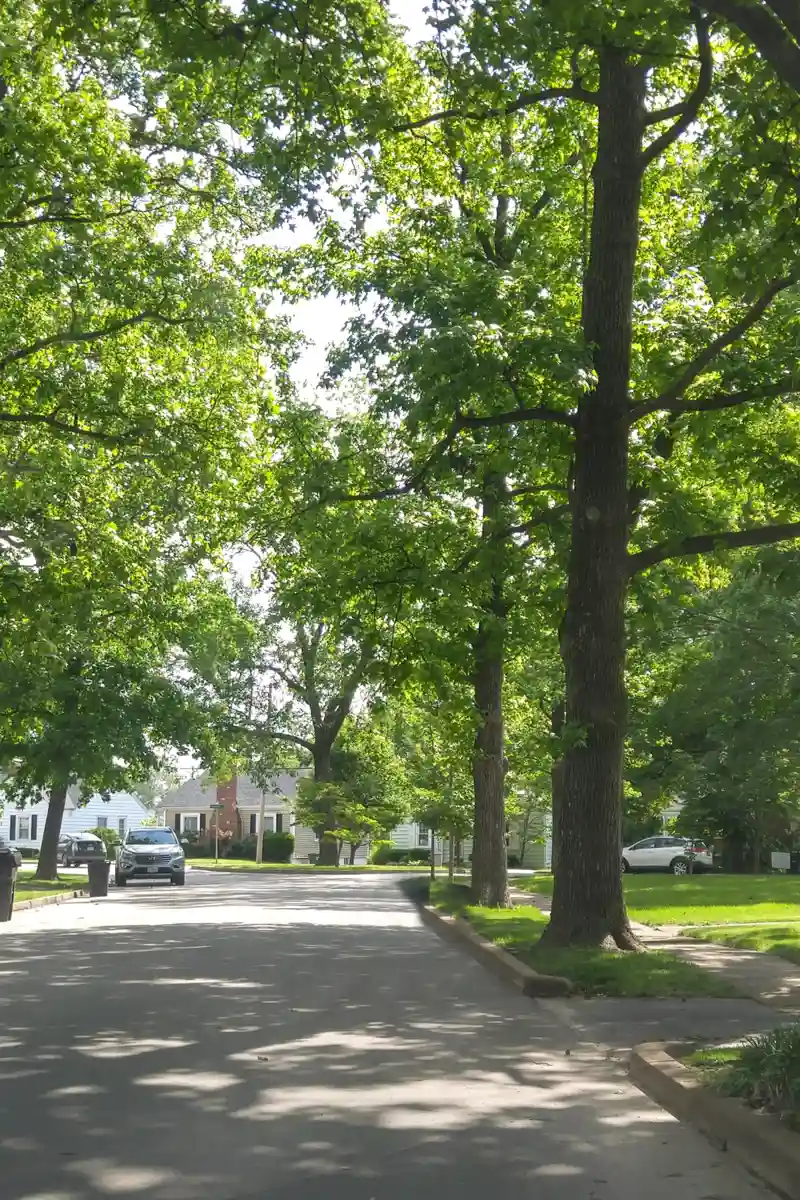Storms can roll in quickly and be over just as fast, but the damage to your landscape left behind from severe rain and winds can last months or even years.
While we traditionally think of storm damage as outwardly visible, hidden storm damage in trees is just as dangerous. Tree injuries not visible to the naked eye can become entry points for pests and diseases, causing long-term tree damage that affects the health, safety, and stability of the tree.
Types of Hidden Tree Injuries Caused by Storms
While some signs of tree damage after a storm are more obvious, like broken or fallen branches, some types of tree injuries happen below the ground or internally and can compromise a tree’s structural integrity. Here are a few examples of hidden storm damage in trees.
Root Damage
Storms can cause root plates to shift and lift, increasing the risk of root damage. While you can’t always directly see a tree’s roots, your trees will show outward symptoms of distress caused by root damage from storms. These include:
- Sparse leaves or leaf wilting and browning
- Branch dieback
- Early fall color
- Leaf scorch
- Heaving or lifted ground
- Change to lean angle
Internal Cracks or Splits
Weakened tree trunks can become susceptible to internal decay and failure from wind pressure during a storm. It’s possible to see cracks or splits in a tree’s trunk, but internal tree cracks pose just as much of a safety concern. Look out for these signs of cracking or splitting:
- Peeling, bulging, and separated bark
- Hollow or deep sound when lightly tapped with a mallet or similar tool
- Soft or spongy wood and other signs of rot or decay on the outside of the tree
- Cracks that open when the tree moves with the wind
- The sound of wood rubbing or grinding
Bark Injuries
While you may think of bark injuries as visible signs of tree damage after a storm, severe weather can cause hidden tree bark damage that compromises the tree’s structural integrity. Here are signs of hidden bark injuries on a tree:
- Bark separating from the wood in a belt-like pattern
- Sap leaking from the tree
- Fungal fruiting bodies growing from the bark
- Clapping sound when that area of bark is lightly struck with a mallet
Compacted Soil
Raindrops from heavy precipitation can compact bare soil. This leads to surface runoff and erosion and can also negatively affect trees. The inability of trees to receive oxygen, water, and nutrients from soil that’s too dense can take some time to appear. The signs of compacted soil are similar to the symptoms of root damage, since compacted soil can cause root damage. Here’s what to look out for:
- Soil is difficult to penetrate with a spike or spade
- Soil clods do not break apart easily in your hand
- Standing water remains on top of soil for long periods after rain
- Shallow rooting / many surface roots
- Early fall color
- Early leaf loss
- Leaf wilt
- Branch dieback
Why Hidden Damage Is A Long-Term Concern
Once the weather clears and immediate safety risks subside, tree damage after a storm remains prevalent.
While trees may appear healthy once a storm passes, they may experience long-term damage that increases risk of limb failure during future storms, as well as a greater risk of pest and disease infestation due to weakened defenses.
Subtle Warning Signs and Symptoms To Watch For
How to tell if a tree is damaged after a storm can be challenging, especially when injuries aren’t visible, but there are sure signs to look out for. These include:
- Wilted leaves
- Branch dieback
- Leaning
- Visible fungal growth
Preventative Tree Care To Help Reduce Storm Damage
Preventative tree care is essential for minimizing tree damage after a storm. Removing loose or dead branches reduces immediate safety risks after a storm. Trees that have had structural pruning to remove poorly-attached limbs, and which have been reduced to remove overextended branches or overall tree size, will fare better, as trees with larger or uneven canopies are at greater risk of failure.
Healthy trees can better withstand stormy weather. Make sure to properly water and mulch your trees to keep them healthy.
Why Professional Tree Inspections Matter
It’s a great idea to hire a Certified Arborist to perform a tree risk assessment on your property after a storm. Not only are professional arborists knowledgeable about tree risks after storms, they can also perform inspections using technology not readily available to the average homeowner, like sonic tomography, to give a clear picture of your tree’s health.
If you’re interested in knowing more about post-storm tree care, contact your local Davey office today!
WHAT TO DO IF A STORM DAMAGES MY TREE





